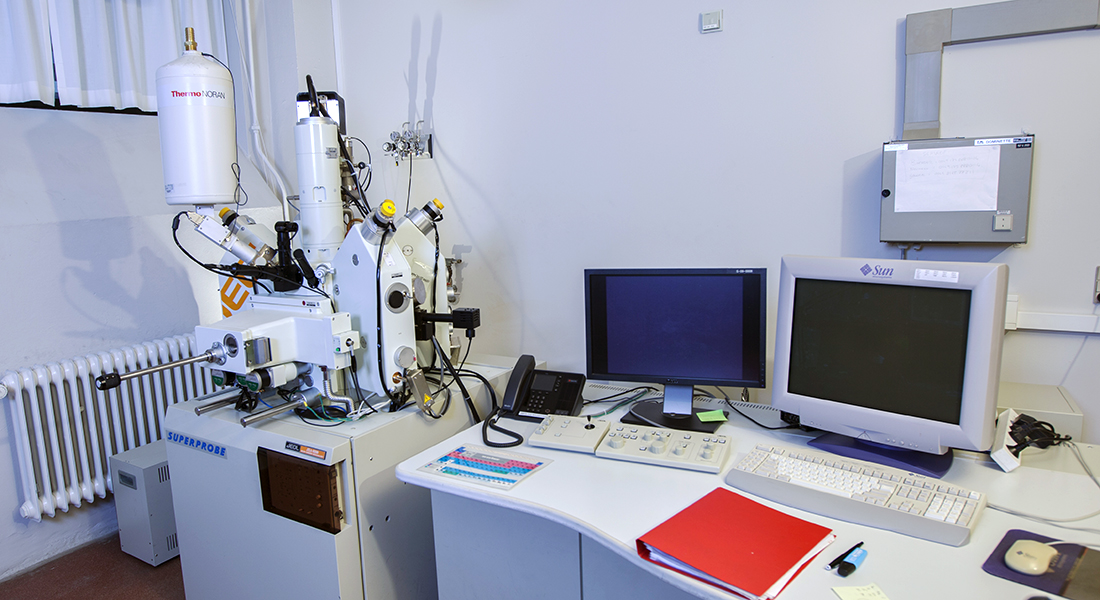Electron Microprobe Laboratory
The laboratory performs non-destructive chemical analyses and imaging of solid materials on the µm scale using a focused electron beam. It is mainly used for quantitative analyses of mineral chemistry in rocks for identification and characterization purposes.

Chemical compositions can be determined qualitatively by examining the different energies of the X-rays produced (Energy Dispersive Spectrometry, EDS).Quantitative chemical compositions are determined by Wavelength Dispersive Spectrometry (WDS) and comparing the intensity of X-rays from standards (known composition) with those from unknown.
The instrument also allows for imaging of materials to demonstrate variations in chemical composition using either back-scattered electrons (BSE) or chemical mapping.
The key instrument in the laboratory is a JEOL JXA-8200 Superprobe, fitted with five wavelength dispersive (WDS) Spectrometers and one energy dispersive (EDS) spectrometer.
Samples must be solid, highly polished, and if non-conductive they will be coated with a thin layer of carbon prior to analysis.There is a limit to sample size, and typically, analysed materials are polished thin sections (48 mm x 28 mm) and polished mounts (diameter = 29 mm and 26 mm).
Theoretically the EMP can quantitatively analyse elements from Beryllium (Z=4) to Uranium (Z=92). This is subject to several important considerations, especially:
- availability of well calibrated standards,
- concentrations in the unknown, and
- the absence of spectral interferences.
A typical detection limit is several hundred ppm, but can be much higher for problematic elements.
The instrument is primarily used in WDS mode for quantitative analysis of major elements (i.e 0.5 wt% or over; Si, Al, Ti, Mn, Mg, Ca, K, Na, Fe, Cr, Ni etc) in geological materials (silicates, oxides and sulfide minerals).
